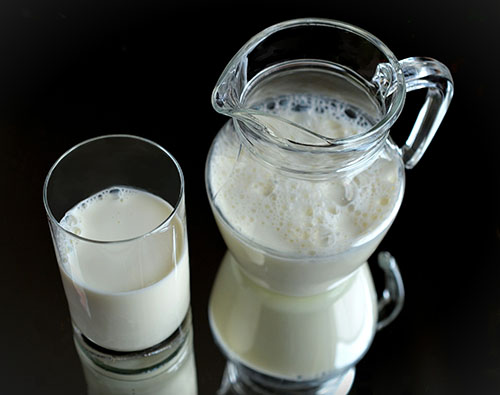If you have walked down the dairy aisle in the grocery store lately, you may have noticed the milk section has grown by a few coolers. Almond, coconut, cashew, flax, even banana milk sit in colorful cartons touting news of “Omega-3 fatty acids” or “more calcium than an 8 oz. cup of milk” or even “half the calories.” With a sudden explosion in intolerances and allergies, or plant-based diets, consumers have demanded fresh alternatives to soy and rice milk, and the industry has delivered. Let’s take a look at some of the new dairy-free options.
Flax milk
I didn’t find this one to be all that creamy. It is best for smoothies or if you are making a recipe, like a muffin, that call for milk. Like most alterna-milks, it has absolutely no protein in it. It does boast Omegas, but keep in mind the vitamins in it are added. Also, like other milks on this list, you need to be careful to purchase the “unsweetened” variety, or you are getting almost 2 teaspoons of added sugar per serving. The high protein options of this milk have pea protein added to them and thickeners which will make it creamier.
Almond Milk
This is probably the most popular choice in the cooler. Again, it is so watered down, that there isn’t all that many actual almonds in the container. So while eating actual almonds will give you a lot of health benefits, you are not going to get the same vitamins, minerals, fiber, and protein from the milk. What is in there is added via fortification, like flax milk. This one is easy to make at home, though, to help ensure you get some more of the actual nut. Again, be careful with added sweeteners, which add nothing but sugar calories. This one is, to me, a little more palatable than flax milk and I enjoy it in coffee or in cereals, as well as smoothies.
Cashew Milk
This one is so similar to almond milk: little protein, lots of the nutrition added in during manufacture. The taste, though, is creamier and thicker. I think this may have to be my fave nut milk. I started using the unsweet (see the pattern?) vanilla in baking, if I want something in my coffee, and in my overnight oats.
Coconut milk
There are a lot of possible benefits to coconut; it has a healthy (but high) fat content, B vitamins, and a few key minerals (iron and calcium). You may notice there is a big difference in the boxed versus the canned coco milk. The carton is going to be pretty watered down, bringing down the overall calories. The canned is great for cooking and a lot of people enjoy it as a creamer. However, remember, it is high in fat, so high in calories, so definitely watch the portion of this one!
Soy Milk
If you are going for a dairy replacement that is going to naturally give you the protein of a glass of cow’s milk, this is going to be the milk to open. There are a ton of debates on whether or not we should include soy in your diet. For the most part, whole soy foods, in moderation, don’t seem to pose a problem. The biggest, legitimate concern with soy is if it is GMO or not. Since most of the soy grown in the US is, in fact, modified, stick to organic soy milk to avoid the pesticides.
I hope this helps you decide which milk to choose if you are looking for something other than cow’s milk for any reason. Have a healthy month!
